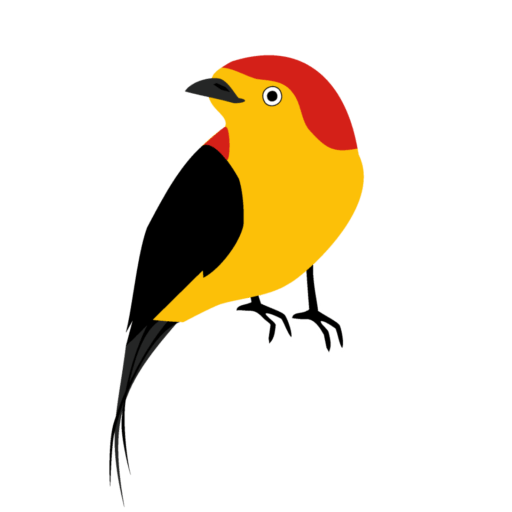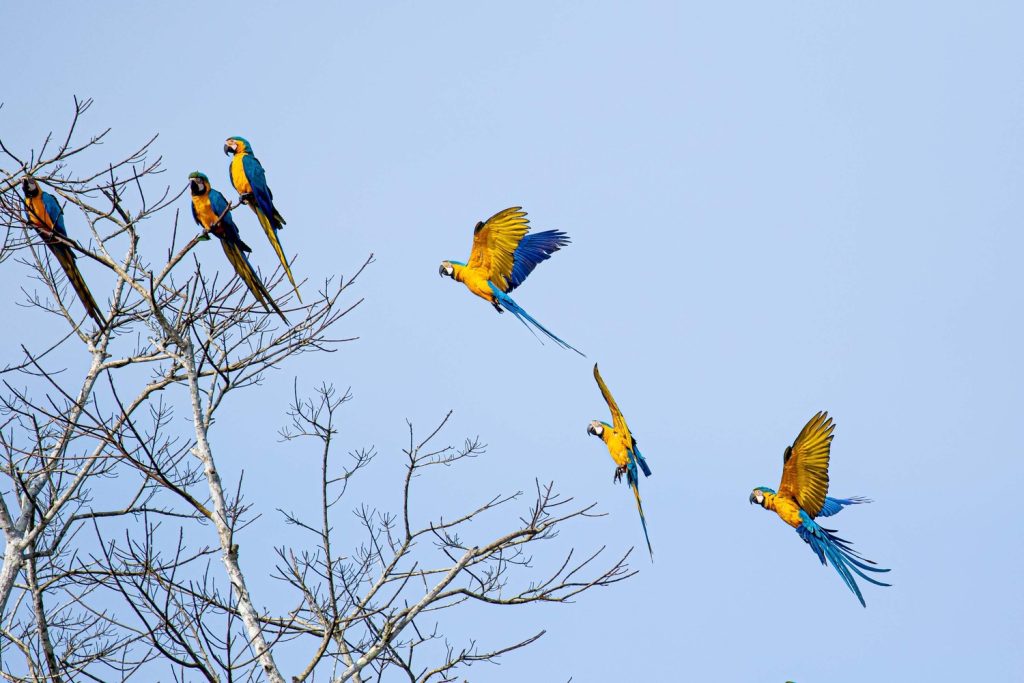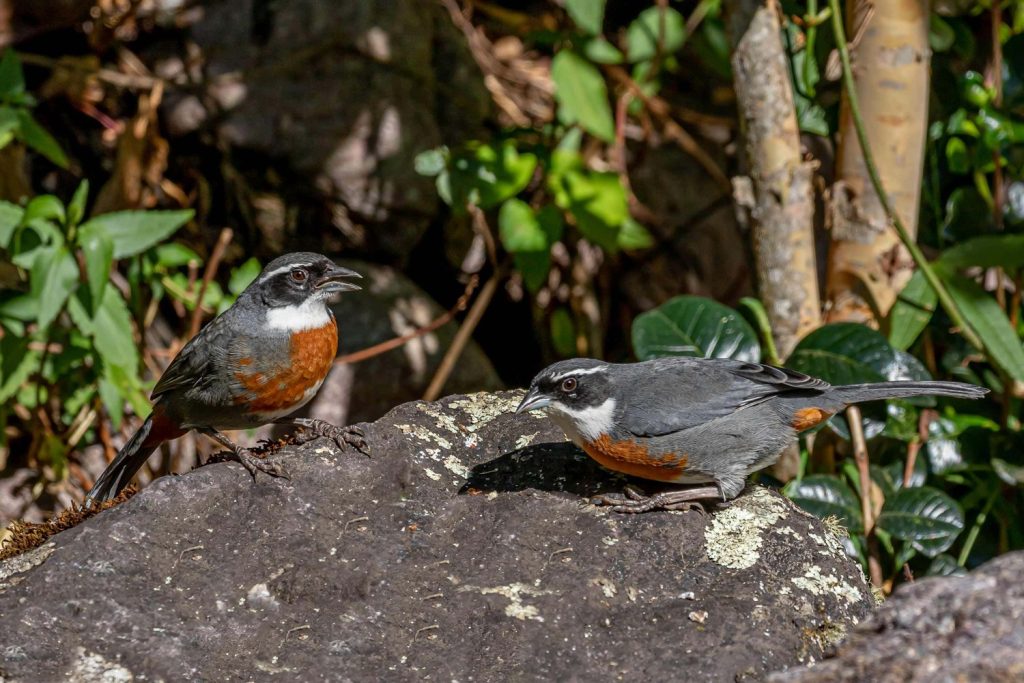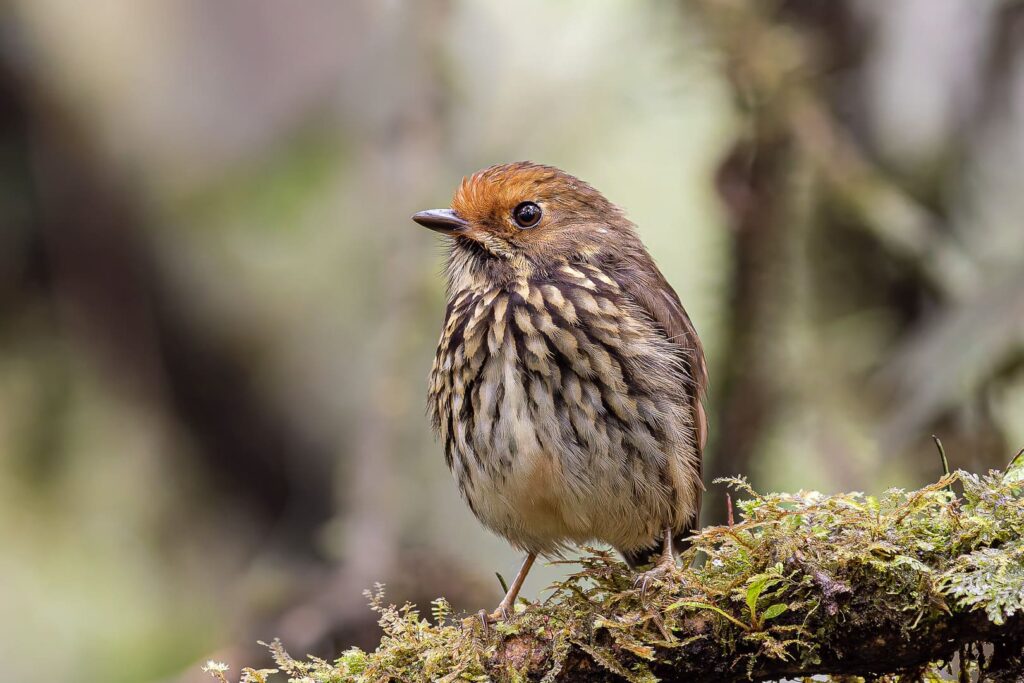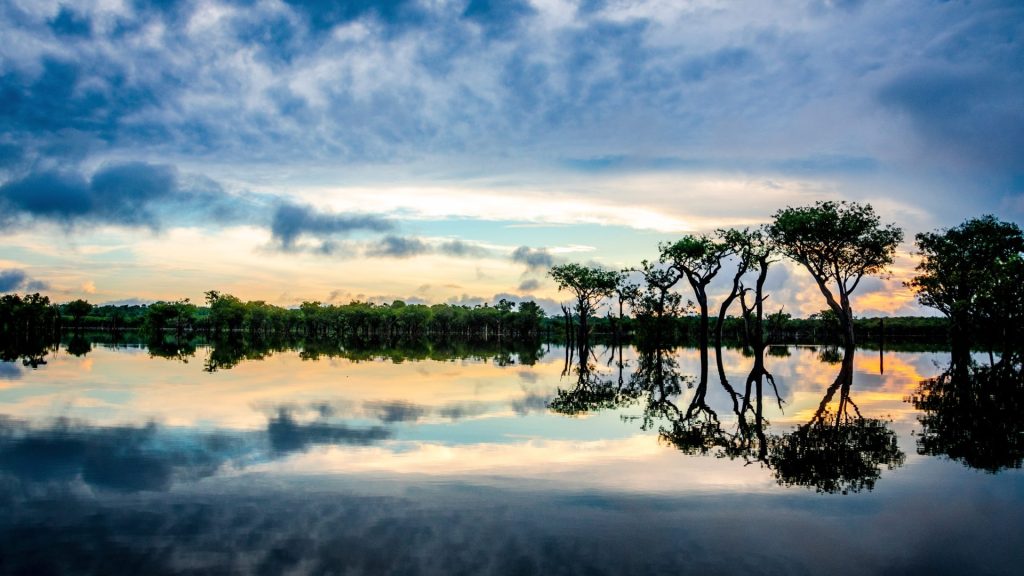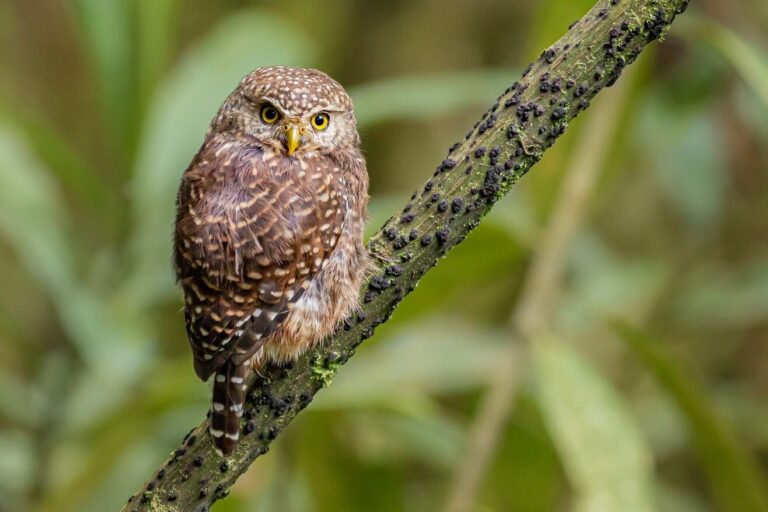Chaparri Lodge: A Birding Oasis in Northern Peru
Located in the dry forests of northern Peru near the dessertic Pacific coast, Chaparri Lodge is a premier destination for birders seeking endemic and range-restricted species in one of the most fascinating ecosystems of South America. Situated within the Chaparri Private Conservation Area, this lodge provides direct access to some of the best birding in the Tumbesian Endemic Zone, a biodiversity hotspot renowned for its unique avifauna and striking desert landscapes.
A Gateway to Tumbesian Endemics
Chaparri Lodge sits at an elevation of approximately 300–600 meters (980–1,970 feet) above sea level, in a region dominated by dry deciduous forest, thorn scrub, and scattered riparian areas. These habitats host an impressive diversity of birds, many of which are difficult to find elsewhere. For serious birdwatchers, this is one of the best places to target some of northern Peru’s most sought-after species.
Getting to Chaparri Lodge
The lodge is located 70 km (about 2 hours) from Chiclayo, the capital of the Lambayeque region. Most visitors arrive via Chiclayo’s international airport (CAP FAP José Quiñones Gonzáles International Airport) and then transfer to the lodge via private vehicle. The journey takes you through arid valleys and rolling hills covered in dry forest, offering birding opportunities along the way.
Birding Highlights at Chaparri Lodge
Tumbesian Endemic Birds
The dry forests of Chaparri are home to numerous Tumbesian endemics, making this an essential stop for anyone aiming to see northern Peru’s specialty birds (See the complete Ebird list here). Some of the most sought-after species include:
- White-winged Guan (Penelope albipennis) – Once thought extinct, this critically endangered species is one of Chaparri’s flagship birds. The lodge provides one of the best opportunities to see it in the wild.
- Tumbes Tyrant (Tumbezia salvini) – A scarce, range-restricted species often seen in open scrub.
- Peruvian Plantcutter (Phytotoma raimondii) – A unique cotinga endemic to northern Peru’s dry forests.
- Rufous Flycatcher (Myiarchus semirufus) – A highly localized flycatcher, best seen in dry forest patches.
- Tumbes Hummingbird (Leucippus baeri) – A regional endemic hummingbird that frequently visits flowering shrubs near the lodge.
- Elegant Crescentchest (Melanopareia elegans) – A striking, skulking species often found singing from the understory.
- Necklaced Spinetail (Synallaxis stictothorax) – A Tumbesian endemic frequently seen in tangled vegetation.
- Gray-and-white Tyrannulet (Pseudelaenia leucospodia) – Another dry forest specialist, often found in mixed flocks.
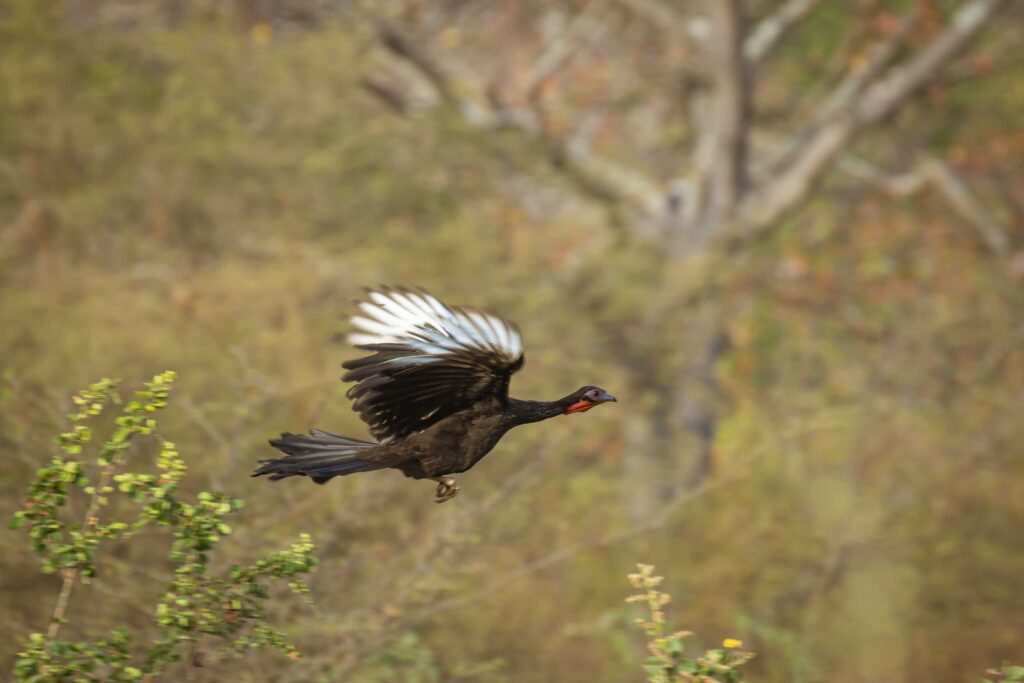
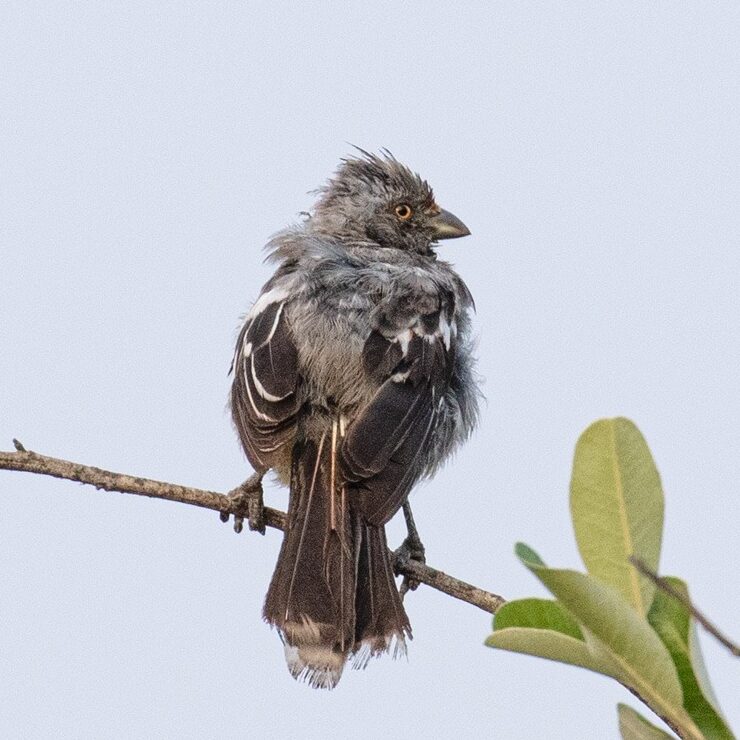
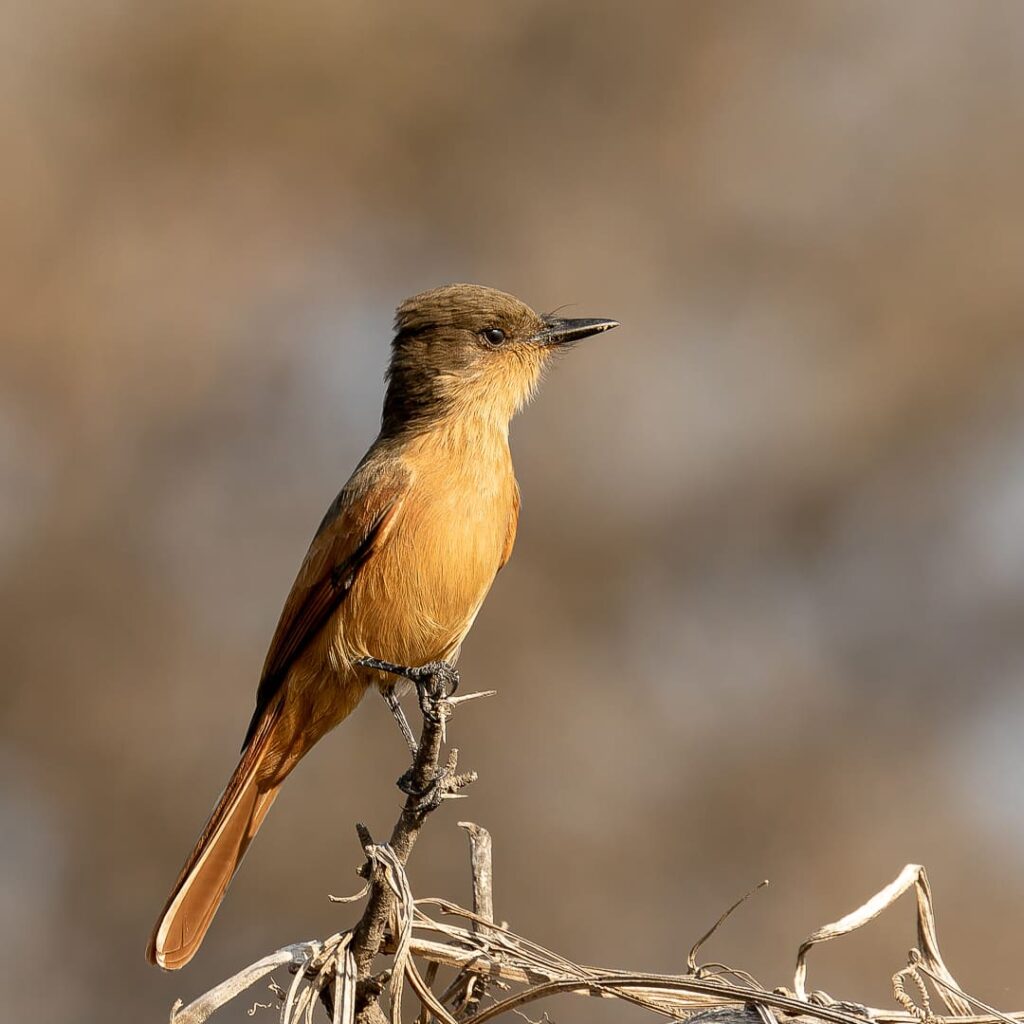
Other Key Species
In addition to Tumbesian endemics, Chaparri is home to a variety of other impressive species:
- Pacific Pygmy-Owl (Glaucidium peruanum) – Frequently heard calling and sometimes seen during the day.
- Collared Antshrike (Thamnophilus bernardi) – A striking antshrike found moving through the undergrowth.
- Scarlet-backed Woodpecker (Dryobates callonotus) – A beautiful, small woodpecker that can be found in the lodge gardens.
- Baird’s Flycatcher (Myiodynastes bairdii) – A large, vocal flycatcher often perched on exposed branches.
- Short-tailed Field-Tyrant (Muscigralla brevicauda) – A scarce, grassland-associated species seen in open areas.
- Pacific Parrotlet (Forpus coelestis) – Small flocks can be seen noisily flying between trees.
Night Birding at Chaparri Lodge
Chaparri is one of the best places in northern Peru to search for nocturnal birds. With a bit of effort, birders can find:
- Peruvian Screech-Owl (Megascops roboratus) – A localized owl often seen near the lodge after dark.
Beyond Birds: A Haven for Wildlife
Chaparri is famous for its wildlife conservation efforts, particularly in protecting the Spectacled Bear (Tremarctos ornatus), which can sometimes be seen foraging near the reserve. Other notable mammals include:
- Sechuran Fox (Lycalopex sechurae) – A common and easily observed species in the dry forest.
- Collared Peccary (Pecari tajacu) – Small herds often roam near the trails.
- White-tailed Deer (Odocoileus virginianus peruvianus) – Occasionally seen in more open areas.
The region is also rich in reptiles, amphibians, and insects, making it an exciting destination for naturalists beyond just birding.
Eco-Friendly Accommodations and Conservation Mission
Chaparri Lodge is designed to blend into the environment, offering visitors a comfortable yet immersive experience in the dry forest. The lodge features:
- Rustic yet comfortable rooms with private bathrooms and solar-powered electricity.
- Outdoor terraces perfect for birding and photography.
- Dining areas serving locally sourced food, including traditional Peruvian cuisine.
- Easy trails and feeders for photography
The lodge plays a crucial role in community-led conservation, supporting local employment and ensuring the sustainable protection of Chaparri’s unique ecosystem.
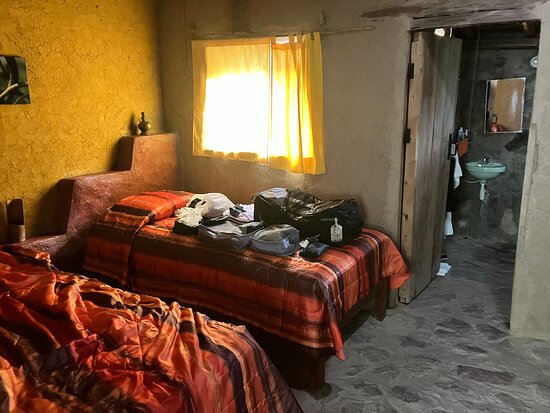
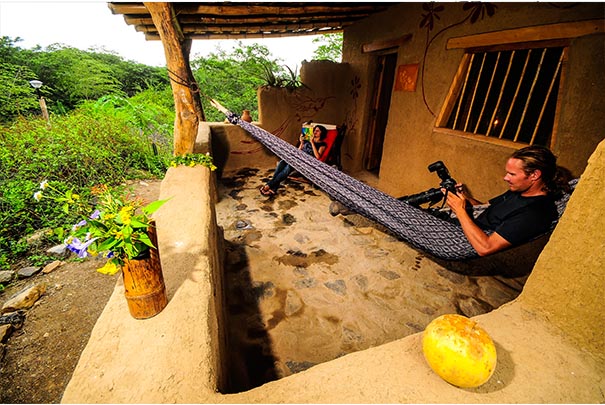
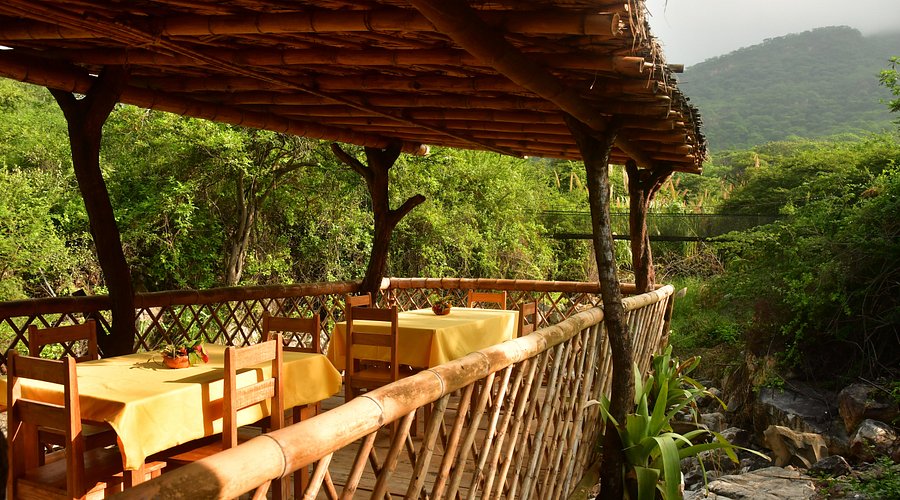
How to Include Chaparri in Your Birding Itinerary
Chaparri Lodge is an essential stop on a northern Peru birding route, often combined with:
- Bosque de Pómac – Another dry forest site hosting species like Peruvian Thick-knee and Tumbes Swift.
- Laquipampa Reserve – A stronghold for White-winged Guan and Spectacled Bears.
- Abra Patricia and Alto Mayo – A transition into humid cloud forests, home to species like the Long-whiskered Owlet and Royal Sunangel.
You can visit Chaparri Lodge in the following tours:
BIRDING IN NORTHERN PERU: The Classic Tour
BIRDING IN NORTHERN PERU: The Grand Tour
Final Thoughts
For birdwatchers, Chaparri Lodge is a truly special place—offering a rare opportunity to see Tumbesian endemics, experience dry forest birding at its finest, and contribute to local conservation efforts. Whether you’re searching for White-winged Guan, Peruvian Plantcutter, or Pacific Pygmy-Owl, this hidden gem in northern Peru is a must-visit destination.

